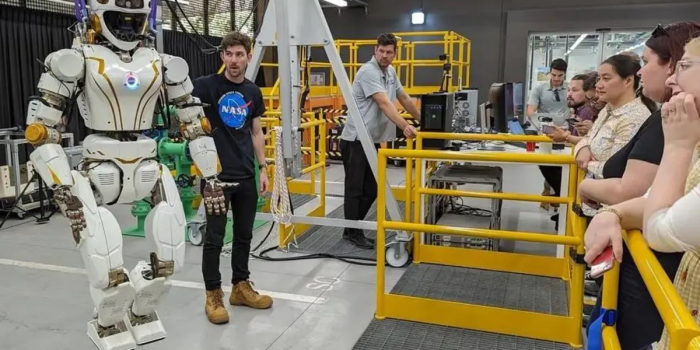In the quest to push the boundaries of space exploration, NASA is reaching the culmination of its testing phases for Valkyrie, the first bipedal humanoid robot. Reminiscent of a metallic Iron Man, this formidable creation, standing at 6 feet 2 inches and weighing 300 pounds, is undergoing final assessments at NASA’s Johnson Space Center in Houston, Texas.
Valkyrie, aptly named after a Norse mythology figure, represents a leap forward in humanoid robotics. Constructed for functionality in diverse environments, this electric behemoth is designed to operate efficiently in degraded or damaged human-engineered spaces. Following tests in Australia that assessed its software, Valkyrie’s capabilities extend to remote mobile dexterous manipulation, crucial for tasks like maintaining unmanned and offshore energy facilities.

Originating from the 2013 DARPA Robotics Challenge Trials, Valkyrie draws from the experience of creating Robonaut 2, undergoing development at the Johnson Space Center in a remarkably short span of 15 months. The incorporation of enhanced electronics, actuators, and sensing capabilities showcases the evolutionary strides made in humanoid robotics.
The potential applications of humanoid robots in space are manifold. From cleaning solar panels to inspecting malfunctioning equipment outside spacecraft, these machines can undertake hazardous tasks, allowing astronauts to focus on exploration without compromising safety. Shaun Azimi, NASA Dexterous Robotics Team Leader, clarifies, “We’re not trying to replace human crews, we’re just trying to take the dull, dirty, and dangerous work off their plates.”
Collaborating with robotics firms, including Apptronik in Austin, Texas, NASA explores insights from humanoid robots designed for earthly applications. The goal is to leverage advancements in terrestrial humanoid robotics to enhance the capabilities of future robots destined for space missions.

Valkyrie’s versatility extends to power options, with the ability to operate from a wall connection or a custom dual-voltage battery, offering about an hour of runtime. The robot’s head, mounted on a flexible neck, integrates advanced perceptual sensors for situational awareness, while its torso and limbs house a sophisticated network of actuators for efficient and serviceable motion.
NASA’s commitment to Valkyrie’s progress on Earth is not just about immediate applications but aims to amass valuable data and insights. These findings will inform ongoing and future robotics and automation development, paving the way for a new era in space exploration.


